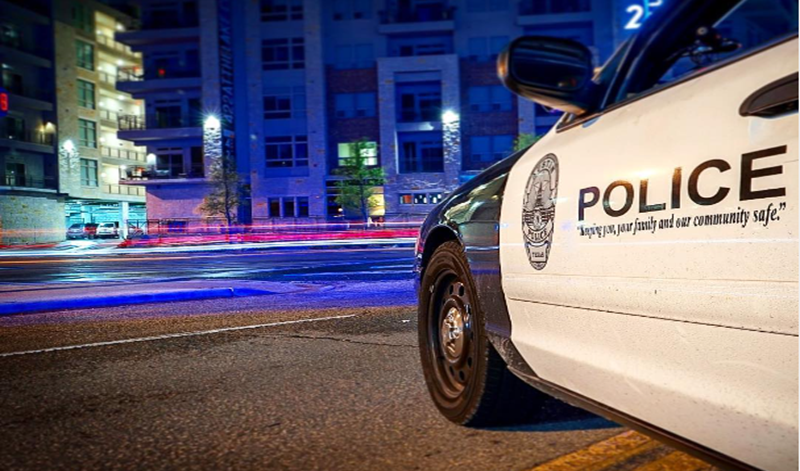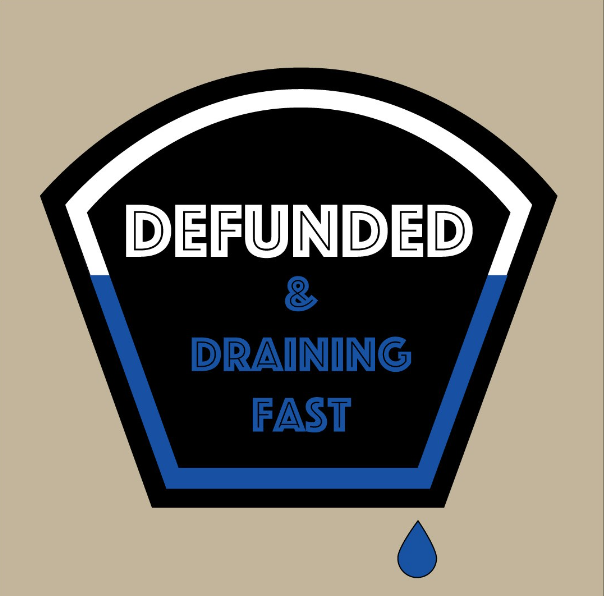
Although driving is a privilege, some motorists may take it too far and operate 2000-pound projectiles as if no one else is around, carelessly causing havoc on America’s highways and byways. As the nation’s number of law enforcement officers is depleted, preventive measures geared toward traffic safety are jeopardized, resulting in far more fatalities.
In church on Sunday, my pastor extolled how “horrible we are on the road,” mis-treating each other by inviting danger via our selfish actions.
A spiritual radio station I listen to during automobile commutes hourly prays for the safety and welfare of “All our first responders: police, fire, paramedics, ER nurses, and anyone having hands in saving lives.”
In thought-provoking succession to the above messages being broadcast, our brothers and sisters at the Texas Municipal Police Association —the Voice of Texas Law Enforcement— posted about a recent study equating the depletion of the Austin, Texas, police force with a marked increase in traffic fatalities.

(Graphic courtesy of the Austin Police Association.)
The TMPA post came with interesting comments from readers underscoring the buffoonery of city council members undermining public safety by devaluing/defunding its police force.
One does not need an Ivy League university Ph.D. to comprehend the inherent correlation between roadway safety and law enforcement officers instilling safety principles for drivers so that they do not do as they please on the asphalt, treating the stripes and signs aligning all motorists as mere suggestions…until it is too late and someone pays the price for another’s self-blind recklessness.

(Photo courtesy of the Canton Police Department.)
Per a TMPA spokesperson, “CBS Austin‘s report unveils a critical correlation: fewer officers [equals] more fatality accidents. Despite the evidence, the City of Austin refuses to address the APD contract issue. Safety should be a priority—not a failed campaign promise!”
After all, Austin Police Department cruisers have the words “Keeping you, your family, and our community safe” on their doors.
The CBS Austin report referred to is titled “Link found between Austin police vacancies and rising traffic fatalities, report reveals.” Interestingly, they used the word “found.” The “link” was never lost or hidden; it was there all along, and cops know this all too well. Even when sworn police strength is robust, the traffic conundrum has always been a persistent threat requiring tons of police attention and enforcement in normal times. Now, with Austin’s political powers flexing foolishly, needlessly costing lives, devastating statistics stare them in the face. In one basket they carry is criminal coddling. In another is the inescapable fester of road rage behavior. Speaking of behavior…
Traffic enforcement is so necessary that states hatched Move Over Laws to magnetize drivers back to the realm of the common-sense approach. And it, too, is still unheeded—police officials working roadway scenes are getting bowled over left and right.
CBS reporter Monique Lopez opened her report with this one line that spells it out: “Traffic enforcement could lead to better traffic safety.” Cops are the proverbial choir affirming the lecture point.
When law enforcement agencies encounter budget cuts and politicos author marching orders for police executives to somehow trim the ranks of public safety —an ugly paradox— traffic enforcement units seem to meet the cleave at the butcher’s block.
This is how elected officials play a key role in public safety…without ever getting their hands dirty. Call them on it and they’ll deflect the blame elsewhere. Such a stale stance.
Nevertheless, law enforcement officers keep fighting the good fight…
Going With the Flow
In the interest of traffic safety and managing to conduct enforcement on a shoestring budget, law enforcement personnel are significantly taxed and placed in greater peril by having fewer cops to combat the steady flow of automobiles and the inherent safe operation on increasingly congested roadways.
In essence, then, are skeletal crews of traffic-enforcement officers responding to call after call from motorists sidelined in wrecks, the less catastrophic ones being made to wait on a long list while others speedily zoom on by. Precarious and vulnerable come to mind. But, hey, city and county and state governments have the budgeting calculus, accounting in a taxpayer-funded office while their respective cars are stably parked in a secured lot.
Officers and troopers in police cruisers observe the lengthy list of “Waiting Calls” and do their darndest to dig out from the pile and respond as soon as practicable. To better serve the motoring public in such circumstances, what ordinarily happens is cops wind up working overtime to address the clog of citizens waiting for police response, thus challenging budgetary accounts formed by politicos who head home at 5 p.m. or so.
Like many situations, cops are caught in the middle and expected to wave magic wands.
In Florida, I continually witness the burgeon of population stemming from mass relocations of people from blue to red states, thereby equating to fewer inches of asphalt and glaringly obvious auto wrecks, including fatalities like those suffered in Austin.
On a recent commute home from a family visit, I counted nine traffic wrecks along my 50-minute drive on the interstate. Nine!
In a state that supports law enforcement officers, Florida illustrates the embrace of cops by gifting them with handsome gestures such as bonuses and even sweetens the pot for out-of-state LEOs looking to go lateral and work where they are valued and gratified. Florida’s law enforcement career fairs counter other states chiseling away their police forces. Beefing up law enforcement ranks says everything about how a jurisdiction feels about the safety and sanctity of its citizenry.
The pre-influx of new residents in the Sunshine State had Florida Highway Patrol troopers ordinarily stationed in medians —processing the incessant administrative duty of writing crash reports— while being seen by motorists traversing the roadways.
Often, FHP troopers take to the public thoroughfares upon police motorcycles (“Motor Unit”), conducting speed enforcement with hand-held detection devices registering a target auto’s speed and distance after a laser-focused dot in the reticle is pointedly aimed at a particular car’s grill.

(Photo courtesy of the Florida Highway Patrol.)
It fosters reminders to watch speeds and harness safe driving skills by being present in public spaces. This circles back to Austin’s self-induced dilemma…
Brow-beating police personnel to the point they depart the ranks underscores power-crazed civilians wielding the proverbial mighty pen, making utterly poor decisions and endangering the lives of those who afford their salary.
Indeed, you get what you vote for…which no longer matters when you are a statistic involved in an otherwise preventable fatality in a crash that may have been precluded by enough police officers conducting traffic safety.